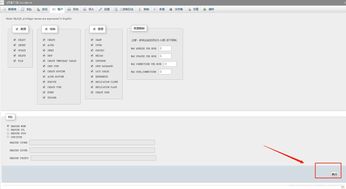| 广告位 后台主题配置管理 |
| 广告位 后台主题配置管理 |
今天给各位分享jquerycountdown服务器时间的知识,其中也会对进行解释,如果能碰巧解决你现在面临的问题,别忘了关注本站,现在开始吧!
设计一个答题的小游戏,每道题可以有20秒时间作答,超过时间就要给出相应的提醒,由于20秒时间太长,不适合做GIF动态图,下面来看一下我写的5秒倒计时的测试程序结果:
一、主体程序
!DOCTYPE
html
html
head
meta
charset="utf-8"
/
title手写倒计时程序/title
link
rel="stylesheet"
type="text/css"
href="css/layout.css"/
/head
body
section
class="qnphp8543-607f-3f4c-5c98 countDown"
span
id="countDownTime"/span
section
class="qnphp607f-3f4c-5c98-cecc clear"/section
/section
script
src="js/jquery-1.11.0.js"
type="text/javascript"
charset="utf-8"/script
script
src="js/layout.js"
type="text/javascript"
charset="utf-8"/script
/body
/html
二、CSS样式
*{
margin:
0;
padding:0;
}
html{
font-size:
12px;
}
.countDown{
width:
3.8rem;
text-align:
center;
margin:
2rem
auto
auto;
}
.countDown
#countDownTime{
font-size:
2rem;
}
三、Jquery程序
先来说一下倒计时的原理:
1、将时间转为0:0格式
2、需要开启一个定时器,每隔1000ms就让时间自动减1
3、判断时间是否为0,如果为0则代表计时结束,此时需要给出提示或者做其他事情
下面来看具体实现的倒计时程序:
$(function(){
var
countDownTime=parseInt(5);
//在这里设置每道题的答题时长
function
countDown(countDownTime){
var
timer=setInterval(function(){
if(countDownTime=0){
showTime(countDownTime);
countDownTime--;
}else{
clearInterval(timer);
alert("计时结束,给出提示");
}
},1000);
}
countDown(countDownTime);
function
showTime(countDownTime){
//这段是计算分和秒的具体数
var
minute=Math.floor(countDownTime/60);
var
second=countDownTime-minute*60;
$("#countDownTime").text(minute+":"+second);
}
})
带着我写的原理再去看这段JS程序估计比较容易吧,希望对小伙伴有帮助。

不知道该怎么给你描述这个概念,这样说吧。
js中,时间有两种表示的:
1.Mon Feb 13 2012 02:58:41 GMT+0800
2.时间戳 1329073121000
这两者是等价的,可以互相转化的。
var t=new Date("Mon Feb 13 2012 02:58:41 GMT+0800");
alert(t-0); //把它当成一个时间戳,就是整型,可以做算术运算,结果为1329073121000
alert(t.toString()); //与alert(t)等价,结果为Mon Feb 13 2012 02:58:41 GMT+0800
我假设从服务器中得到的是时间戳
ASP代码部分:
%
dim conn,sql
set conn = server.createobject("adodb.connection")
conn.connectionstring="Provider = Microsoft.Jet.OLEDB.4.0;Data Source="server.mapPath("Database.mdb")
conn.open
sql="SELECT option FROM table WHERE type=time"
set rs = server.createobject("adodb.recordset")
rs.open sql,conn,1,1
%
HTML部分:
html
head
titlecountdown/title
/head
body
div id="show"/div
/body
/html
script type="text/javascript"
(function(){
// var t=%=rs("option")%;
var t=1331582321000;
var show=document.getElementById('show');
setInterval(function(){
var d=count(t);
show.innerHTML=d.day+'日'+d.hour+'小时'+d.min+'分钟'+d.sec+'秒';
},1000);
//传入要倒计时的日期的时间戳,返回还剩多少日小时分钟秒
function count(t){
var c=Math.floor((t-(new Date()))/1000);
var d,h,m,s;
d=Math.floor(c/24/3600);
h=Math.floor((c-d*24*3600)/3600);
m=Math.floor((c-d*24*3600-h*3600)/60);
s=Math.floor(c-d*24*3600-h*3600-m*60);
return {
day:d,
hour:h,
min:m,
sec:s
}
}
})();
/script
!DOCTYPE html
html lang="en"
head
meta charset="UTF-8"
titleTitle/title
//换成你的jquery库
script type="text/javascript" src="jquery.js"/script
script type="text/javascript"
var setTime;
$(document).ready(function(){
var time=parseInt($("#time").text());
setTime=setInterval(function(){
if(time=0){
clearInterval(setTime);
return;
}
time--;
$("#time").text(time);
},1000);
});
/script
/head
body
span id="time"60/span
/body
/html
1.使用:
$('#clock').countdown(finalData[, callback(或options)]);
finalData - 必选
options - 可选
2.参数:
1finalData - 设置倒计时的终止时间
3种格式:
1)原生的 'Date' 对象
2)毫秒格式的 '时间戳'(javascript的时间戳,单位是 '毫秒',切记!)
matchers.push(/^[0-9]*$/.source);
源码中的正则:
matchers.push(/^[0-9]*$/.source);
3)字符串格式的时间
YYYY/MM/DD
MM/DD/YYYY
YYYY/MM/DD hh:mm:ss
MM/DD/YYYY hh:mm:ss
源码中的正则:
matchers.push(/([0-9]{1,2}\/){2}[0-9]{4}( [0-9]{1,2}(:[0-9]{2}){2})?/.source);
matchers.push(/[0-9]{4}([\/\-][0-9]{1,2}){2}( [0-9]{1,2}(:[0-9]{2}){2})?/.source);
2callback(或options) - 回调函数 或者 options 对象
1)callback - 倒计时,有3个事件类型,都绑定上回调方法!
function(event) {}
源码分析:
this.$el.on("update.countdown", options);
this.$el.on("stoped.countdown", options);
this.$el.on("finish.countdown", options);
2)options - 传递一个对象,覆盖 'countdown' 的默认配置,默认配置有3个:
defaultOptions = {
precision: 100, // int - 更新速率(毫秒为单位)
elapse: false, // bool - 倒计时结束后,是否继续
defer: false // bool - 延迟初始化模式
}
1.precision - 倒计时的精度
源码分析:
this.interval = setInterval(function() {
self.update.call(self);
}, this.options.precision); // setInterval()的第二个参数
2.elapse - 过期模式
false - 一旦到达设定的最终时间,停止计时。(默认)
true - 到达最终时间,继续执行倒计时。
源码分析:
if (!this.options.elapse this.totalSecsLeft === 0) { // 到达最终事件
this.stop(); // 停止计时
this.dispatchEvent("finish"); // 分发 'finish' 事件
} else {
this.dispatchEvent("update"); // 分发 'update' 事件
}
--------
一旦到达终止时间,会传递给事件对象,一个属性:
event.elapsed - 是否已经过期
this.elapsed = now = this.finalDate;
3.defer - 是否延迟启动
false - 表示初始化了 '倒计时对象',会自动开始计时。(默认)
true - 在实例化对象后,需要我们来手动启动计时。
源码分析:
if (this.options.defer === false) {
this.start();
}
3.事件:
3个事件方法:
update.countdown
finish.countdown
stoped.countdown // 这个得说明下,文档中,应该是错误的!源码中是:'stoped',文档中写的是 'stop'
3个事件,都有一个 'namespace-命名空间','.countdown'
每个事件对象,具备额外的公共属性:
event.finalDate = this.finalDate; // 设定的终止时间
event.elapsed = this.elapsed; // 是否已经过期
event.offset = $.extend({}, this.offset); // 当前时间,在各个时间刻度上的计算
源码分析:
this.offset = {
seconds: this.totalSecsLeft % 60,
minutes: Math.floor(this.totalSecsLeft / 60) % 60,
hours: Math.floor(this.totalSecsLeft / 60 / 60) % 24,
days: Math.floor(this.totalSecsLeft / 60 / 60 / 24) % 7,
daysToWeek: Math.floor(this.totalSecsLeft / 60 / 60 / 24) % 7,
daysToMonth: Math.floor(this.totalSecsLeft / 60 / 60 / 24 % 30.4368),
weeks: Math.floor(this.totalSecsLeft / 60 / 60 / 24 / 7),
weeksToMonth: Math.floor(this.totalSecsLeft / 60 / 60 / 24 / 7) % 4,
months: Math.floor(this.totalSecsLeft / 60 / 60 / 24 / 30.4368),
years: Math.abs(this.finalDate.getFullYear() - now.getFullYear()),
totalDays: Math.floor(this.totalSecsLeft / 60 / 60 / 24),
totalHours: Math.floor(this.totalSecsLeft / 60 / 60),
totalMinutes: Math.floor(this.totalSecsLeft / 60),
totalSeconds: this.totalSecsLeft
};
event.strftime = strftime(this.offset); // 格式化时间函数
源码分析:
function strftime(offsetObject) {
return function(format) {
/*
匹配指令:
%-字母
%!字母
%字母
%字母:其它字符;
*/
var directives = format.match(/%(-|!)?[A-Z]{1}(:[^;]+;)?/gi);
if (directives) {
// 对匹配到的每个指令,进行解析
for (var i = 0, len = directives.length; i len; ++i) {
var directive = directives[i].match(/%(-|!)?([a-zA-Z]{1})(:[^;]+;)?/),
regexp = escapedRegExp(directive[0]), // 正则
modifier = directive[1] || "", // 模式:- | ! | ""
plural = directive[3] || "", // :其他字符; ------ 和 '!' 模式一起使用
value = null;
directive = directive[2]; // 表示时间刻度的字母(Y,m,n,d,w...)
// 匹配到了该字母对应的时间值,进行字符替换
if (DIRECTIVE_KEY_MAP.hasOwnProperty(directive)) {
value = DIRECTIVE_KEY_MAP[directive];
value = Number(offsetObject[value]);
}
if (value !== null) {
// '!'模式,执行 'pluralize',会需要 '(:[^;]+;)' 匹配到的值
if (modifier === "!") {
value = pluralize(plural, value);
}
// ""模式,小于10,填充 '0'
if (modifier === "") {
if (value 10) {
value = "0" + value.toString();
}
}
format = format.replace(regexp, value.toString());
}
}
}
format = format.replace(/%%/, "%");
return format;
};
}
// '!' 模式时,提供对复数的多元化支持,默认复数会添加 's',我们可使用自定义的后缀 '...'
function pluralize(format, count) {
var plural = "s", singular = "";
if (format) {
// 去除:, ; , '空白'。使用 ',' 分隔单数和复数的2种格式
format = format.replace(/(:|;|\s)/gi, "").split(/\,/);
if (format.length === 1) {
plural = format[0];
} else {
singular = format[0];
plural = format[1];
}
}
// 当时间刻度 1,返回复数格式,否则为单数
if (Math.abs(count) 1) {
return plural;
} else {
return singular;
}
}
4.event.strftime - 格式化函数,是一个简单的格式化程序,有助于保持代码更加语义,并且避免重复的工作。
它根据给定格式字符串中的指令来格式化偏移日期。 该指令由百分比(%)组成。 未列为指令的任何文本将被传递到输出字符串。
event.strftime(%W weeks %-d days %-H h %M min %S sec');
/*
Y: "years",
m: "months",
n: "daysToMonth",
d: "daysToWeek",
w: "weeks",
W: "weeksToMonth",
H: "hours",
M: "minutes",
S: "seconds",
D: "totalDays",
I: "totalHours",
N: "totalMinutes",
T: "totalSeconds"
*/
所有的指令,包含0填充(01,02,03)和空白填充'1,2,3'版本,默认是0填充,不需要0填充,使用-%D。
-
模式:
- // 空白填充
! // 多元化复数模式
默认:复数添加 's',单数不变
%!H // 当 hour1,结尾添加 's'
%!H:hours // 当 hour1,结尾添加 'hours'
%!H:hour,hours; // 当 hour1,结尾添加 'hours',hour1,为单数,添加 'hour'。',' 分隔的,前为单数添加的字符,后为复数添加的字符
5.控制:
resume - 恢复
pause - 暂停
------------
start - 开始
stop - 停止
pause/resume,本质就是 start/stop 的别名
源码分析:
pause: function() {
this.stop();
},
resume: function() {
this.start();
},
6.countdown插件,本身只做时间的处理,并没做任何时间的默认展示,需要我们自己来做。
我们需要做的就是:
1.调用countdown(),传递一个 '终止时间'
2.绑定countdown相关事件,在事件内,进行我们的展示处理:
上面讲了事件的相关内容:
13个事件方法:
update.countdown
finish.countdown
stoped.countdown
2每个事件的额外属性:
event.finalDate = this.finalDate; // 设定的终止时间
event.elapsed = this.elapsed; // 是否已经过期
event.offset = $.extend({}, this.offset); // 当前时间,在各个时间刻度上的计算
event.strftime = strftime(this.offset); // 格式化时间函数
示例:
$('#countdown').countdown("2017/5/1")
.on('update.countdown', function(){
format = "还剩%D天, %H时, %M分, %S秒开始抽奖"; // 指定格式字符串
$(this).html(event.strftime(format)); // 将格式字符串,传递给 'event.strftime()' 解析
})
.on('finish.countdown', function(){
$(this).html('开始抽奖');
});
是本地页面时间,前端一般获取的都是本地时间。
JQuery CountDown里面都是通过new Date的方式和setInterval定时方式进行的。
一般countdown的初始时间最好是从服务器给定,然后倒计时。
关于jquerycountdown服务器时间和的介绍到此就结束了,不知道你从中找到你需要的信息了吗 ?如果你还想了解更多这方面的信息,记得收藏关注本站。
| 广告位 后台主题配置管理 |
| 广告位 后台主题配置管理 |